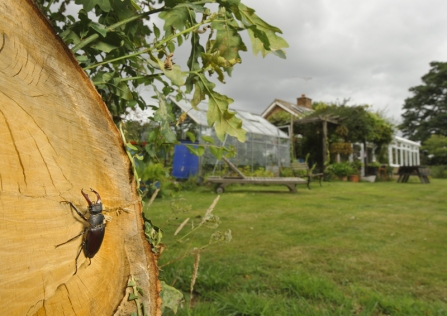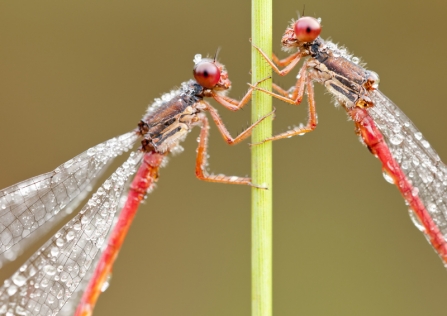What insects lack in size they make up for in number and sheer adaptability. They can reproduce at astonishing rates (aphids are born pregnant) and colonise new areas quickly as most of them can fly for at least part of their life-cycle. Insects deploy a dazzling array of strategies to survive and thrive in different environments, including migration and hibernation. Some insects switch strategies between larval and adult stages, including living in and then out of water. Many species of insect can adapt to changing weather patterns by having different numbers of generations each season, tuning-into the weather-cues that trigger proliferation of their preferred food.
Insect Apocalypse: it’s all connected
© Vaughn Matthews
The English Oak hosts nearly 300 species of insect many of which are exclusive to English Oak trees. These are all assembled into guilds, like tradesmen, who may be specialists or generalists, based on how they utilise the mighty host tree. Some are straightforward: the bright green oak tortrix moth caterpillar chews fresh oak leaves. The oak apple gall wasp causes the familiar growth which is its home, food and fortress. Several species of bug sup a liquid lunch from the tree’s sap, especially later in summer when the leaves are too tough to chew. But that’s just the first layer. As well as generalist predators of these herbivores, there are specialist parasites, including dozens of species of wasp, which lay their eggs on or in a specific host, eating them alive and eventually killing them. But - here’s where it gets really intricate - there is another group of parasites of the parasites, tiny wasps and flies that are exclusive to their host. So the connectedness and interdependencies of one tree show a complex web of life extending from it. (And that’s before we look underground to the life-support system of the tree itself, or when it eventually dies and supports a completely different community).

© Terry Whittaker/2020VISION
Our freshwater environment is no different. There are the shredders, the collectors, the scavengers, the scrapers and the predators, all of which make their own unique contribution to the river ecosystem not to mention providing food for the celebrated salmon and trout. Many of these insects live years in their aquatic form, only coming to the surface to complete their life-cycle in glorious but short bursts of colour and delicate form, such as the mayflies, damselflies and caddis flies. But all is not well in these delicate environments locally. One of our Trust Vice Presidents, who remembers the ‘fly-life’ of his bit of chalk stream over decades, will attest to crashes in numbers from thousands of freshwater invertebrates to tens in a handful of riverbed. Our ancestors relied upon an abundance of salmon and trout for food; large wild specimens are now truly rare, pointing to the foundational importance of insects and invertebrates on our own food chain.

© Ross Hoddinott/2020VISION
It has been said that the soil is one of the frontiers in science and it holds the key to our survival in so many ways: growing food, storing carbon and holding and filtering water. The soil is more than mineral though and the organic component is very much alive with fungi, bacteria, innumerable tiny and not-so-tiny insects and invertebrates which convert leaf litter into nutrients for growing plants, massively increasing the soil’s ability to hold carbon and water. There is a growing body of evidence which suggests that agricultural chemicals knock-out key living parts of the soil, preventing it from functioning properly, with loss of natural fertility and stability.
So like the proverbial house of cards, if we pull out too many from the lower layers, the whole edifice comes crashing down. It’s the same with insects – whatever we do to a few key species may have untold impacts for the whole system, of which we are part.

